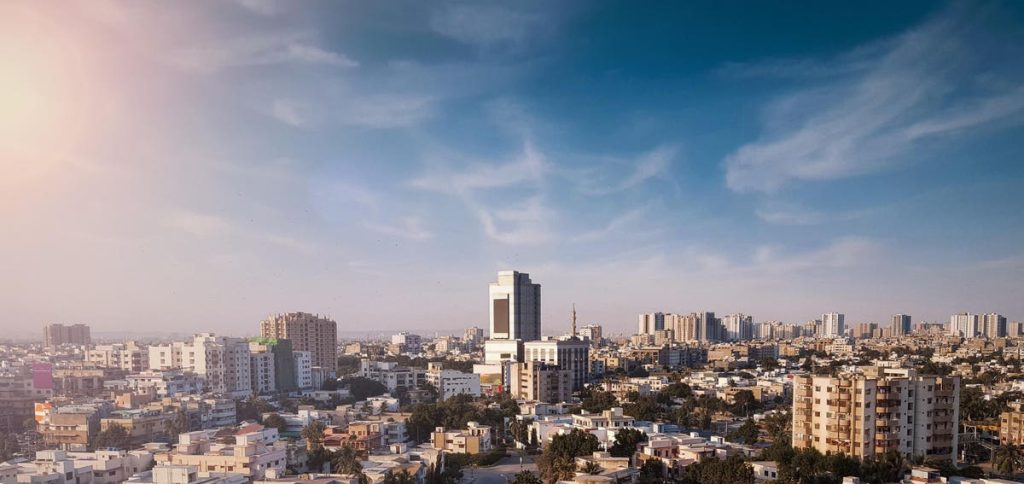When it comes to fintech in South Asia, India has long dominated, whether in terms of overall investment, unicorns, or the broader ecosystem. While India will no doubt remain the biggest player in the region for the foreseeable future, its neighbors have an increasing number of market opportunities.
Indeed, Pakistan and Bangladesh have two of the world’s largest unbanked populations, and Nepal, while much a smaller market, is nonetheless also increasingly developing its fintech ecosystem. The payments segment in growing fast in all three countries, while digital banking is ascendant in both Pakistan and Bangladesh.
Unlike in most of East Asia, digital banking has an opportunity to become a big business in South Asia because the market need is real, regulators are motivated to support the digibanks, and incumbents are not as well positioned to sabotage and/or co-opt the digital upstarts.
Pakistan’s Fintech Boom
Pakistan’s fintech sector had a record year in 2022, raising more than US$97 million. The largest deal in 2022 was the US$17.6 million raised by Dbank in its seed round led by Kleiner Perkins, Sequoia Capital and Surge. Dbank intends to take on the country’s informal credit system known for exploiting borrowers with high interest rates.
For its part, Pakistani payments firm SadaPay raised $US10.7 million in a seed-extension round last year after the State Bank of Pakistan allowed it to offer financial services through its smartphone app. As a result of the central bank’s decision, SadaPay has been able to add millions of new users. The London-based fintech Boku predicts that SadaPay will be the fastest-growing mobile wallet in the world in the five years to 2025.
Meanwhile, Pakistan is fast-tracking the approval of digital banks, given half of its population of 220 million lacks a bank account. In January, the State Bank of Pakistan announced the winners of five digital banking licenses. They include Easy Paisa DB, Hugo Bank, KT Bank, UAE
UAE
The next steps for the five winners will be to incorporate a public limited company with the Securities and Exchange Commission of Pakistan, gain an in-principle approval from the SBP to demonstrate operational readiness, and finally, undertake the pilot phase. Once the pilot phase is complete, pending approval from the SBP, the five digibanks will be able to commercially launch their operations.
Digital Banking In Bangladesh
With a population of 169 million, of whom 40% to 50% lack a bank account, Bangladesh is a prime candidate for digital banks. With that in mind, and considering the government’s digitization and financial inclusion goals, we expect Bangladesh will be relatively swift in getting the digital banks up and running. Dhaka aims for at least 75% of local transactions to be conducted digitally by 2027, as part of its goal for a “Smart Bangladesh” by 2041.
As the Dhaka Tribune noted in April, “It [the initiative] aims to foster the inclusivity of all people in Bangladesh to ensure a decent standard of living for everyone while striving to ensure a prosperous country with a lower Gini ratio.”
Under digital banking draft guidelines, the online lenders will be required to issue customers bank cards and QR codes as well as use “advanced technologies” like artificial intelligence, machine learning and blockchain to facilitate transactions. Those requirements should be easy to fulfill since fintechs usually focus on them regardless of regulatory mandates.
Crucially, capitalization requirements are modest, which could make it easier for enterprising start-ups to win licenses. Bangladesh’s online banks must have paid-up capital of 1.25 billion taka ($11.55 million) each, considerably lower than the requirement for conventional banks of 5 billion taka.
Nepal: Nascent But Growing Fast
Compared to Pakistan and Bangladesh, Nepal has a much smaller and less developed fintech sector, but that is changing fast. As is often the case with fledgling fintech markets, payments is the initial focus. To address the lack of interoperability among banks and e-wallets in the country, Nepal launched a national payment switch in November 2021. The payment switch will serve as the country’s key retail payment rail, allowing banks, e-wallets and non-financial institutions to easily transfer money.
These efforts have borne fruit. Nepal Rastra Bank’s (NRB) monthly payment system indicators show 7.7 million QR-based payment transactions valued at Rs23 billion ($175.2 million) from mid-March to mid-April, compared to just 800,000 valued at Rs2.7) billion ($20.6 million two years ago.
At the same time, India’s United Payments Interface (UPI) has taken a strong interest in the Nepal market, to which it expanded in February 2022. The Nepal expansion marks the first time UPI’s real-time payment system will be fully adopted internationally. That is, UPI will function for Nepali users like it does for Indians in India.
“Nepal shall be the first country outside of India to adopt UPI as the payments platform driving the digitalization of cash transactions,” NPCI said in a press release.
China and India Will Loom Large
Looking ahead, we expect that digitization of financial services will accelerate in Pakistan, Bangladesh and Nepal, and their respective market opportunities will multiply accordingly. There is a lot of low-hanging fruit to be plucked in all three countries.
While major Western VCs will no doubt continue to invest in these markets, we expect that both China and India will loom increasingly large in the region. For instance, on June 1, India and Nepal inked a cross-border digital payments MoU that is expected to improve the convenience of digital transactions for businesspeople, students, and tourists from both countries. Under the agreement, Indian tourists in Nepal will likely be able to make digital payments using Indian e-wallets like BharatPe, PhonePe, Paytm and Google Pay.
Additionally, Alibaba and Ant Group founder Jack Ma in late June made a surprise visit to Nepal ahead of a planned trip to Pakistan. Alipay has had a presence in Nepal for several years, though it is not a major player in the country’s payments market. It is possible that Ma visited Nepal because Ant Group wants to bring its Alipay+ product to the market. Alipay+ has been expanding steadily across Asia since the fall of 2022.
Given geopolitical tensions between China and India, we expect that Ant will more actively explore opportunities in the rest of South Asia. To that end, Ant has a 20% stake in Bangladesh’s leading e-wallet bKash, which will likely apply for a digital banking license. As a dominant player in the fintech ecosystem, it most likely will succeed in its bid. According to Tellimer Insights, as of June 2022, bKash had 62.3 million customers (of whom 37.5 million were active), 280,000 merchants and 295,000 agents in its network. It facilitated 3.4 trillion taka (US$39 billion) in transactions during the first half of 2022.
Finally, Ant also has a strong presence in Pakistan fintech. It has a 40% stake in Pakistan’s Telenor Microfinance Bank which it purchased back in 2018 from Norwegian mobile operator Telenor ASA for $184.5 million. Further, Easy Paisa DB, one of the winners of a digital banking license in Pakistan, is a joint venture of Telenor Pakistan and Alipay.
Overall, despite its travails at home and tough market conditions in India, Ant is well poised to capitalize on fast-emerging opportunities in Nepal, Bangladesh and Pakistan. South Asia could ultimately become as important to Ant’s international expansion as its higher-profile ventures in ASEAN countries.
Read the full article here















